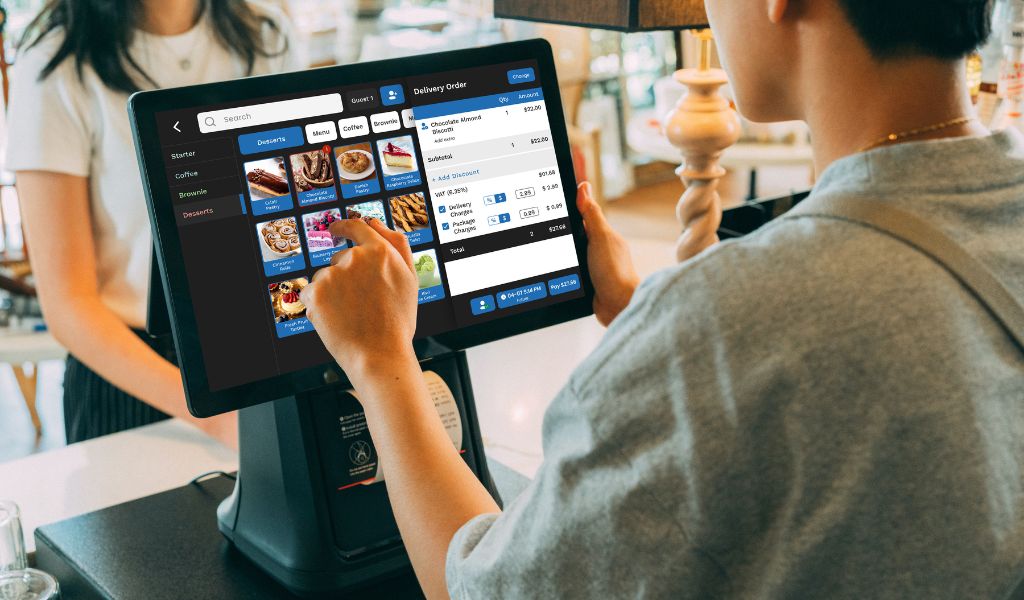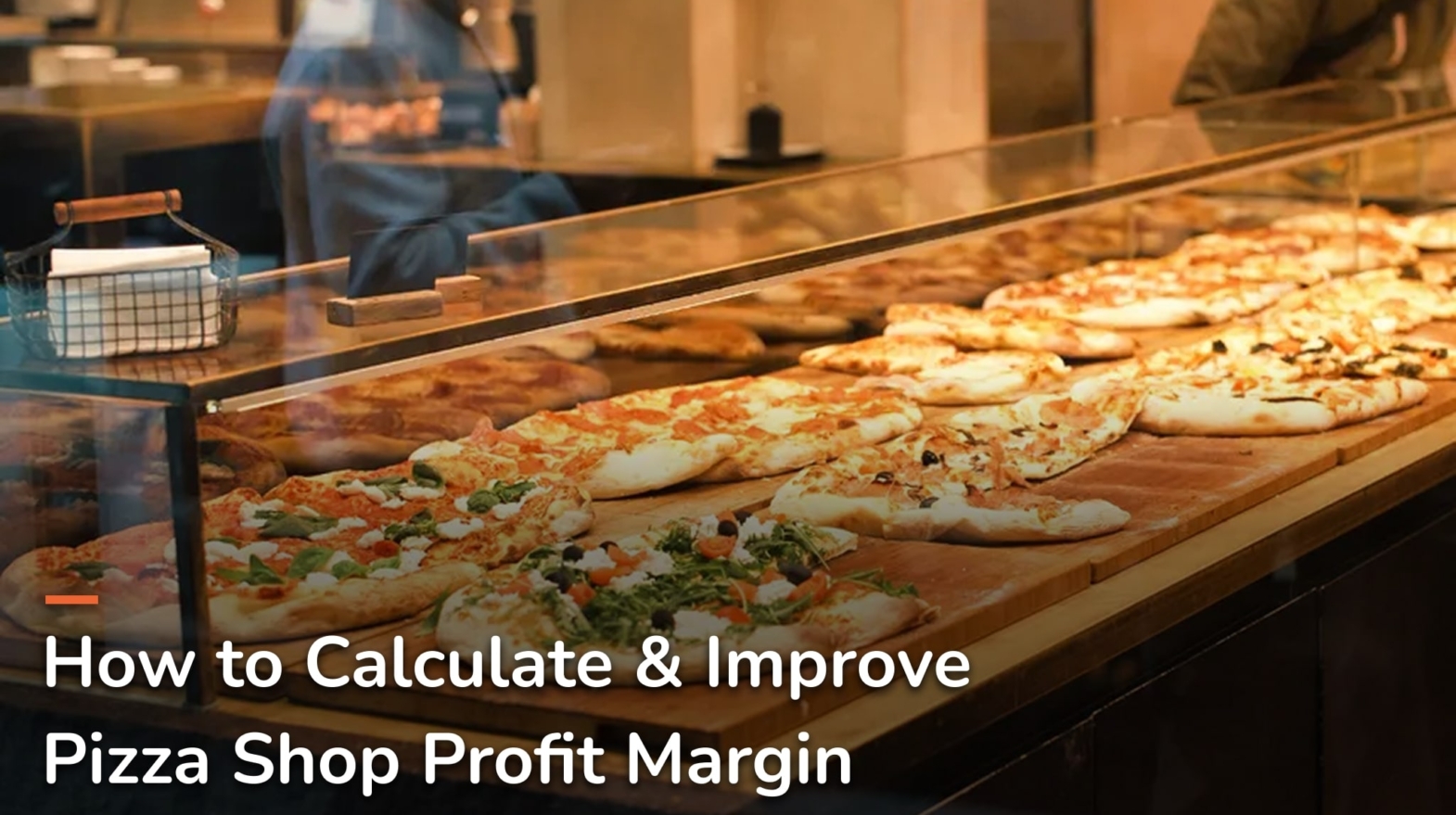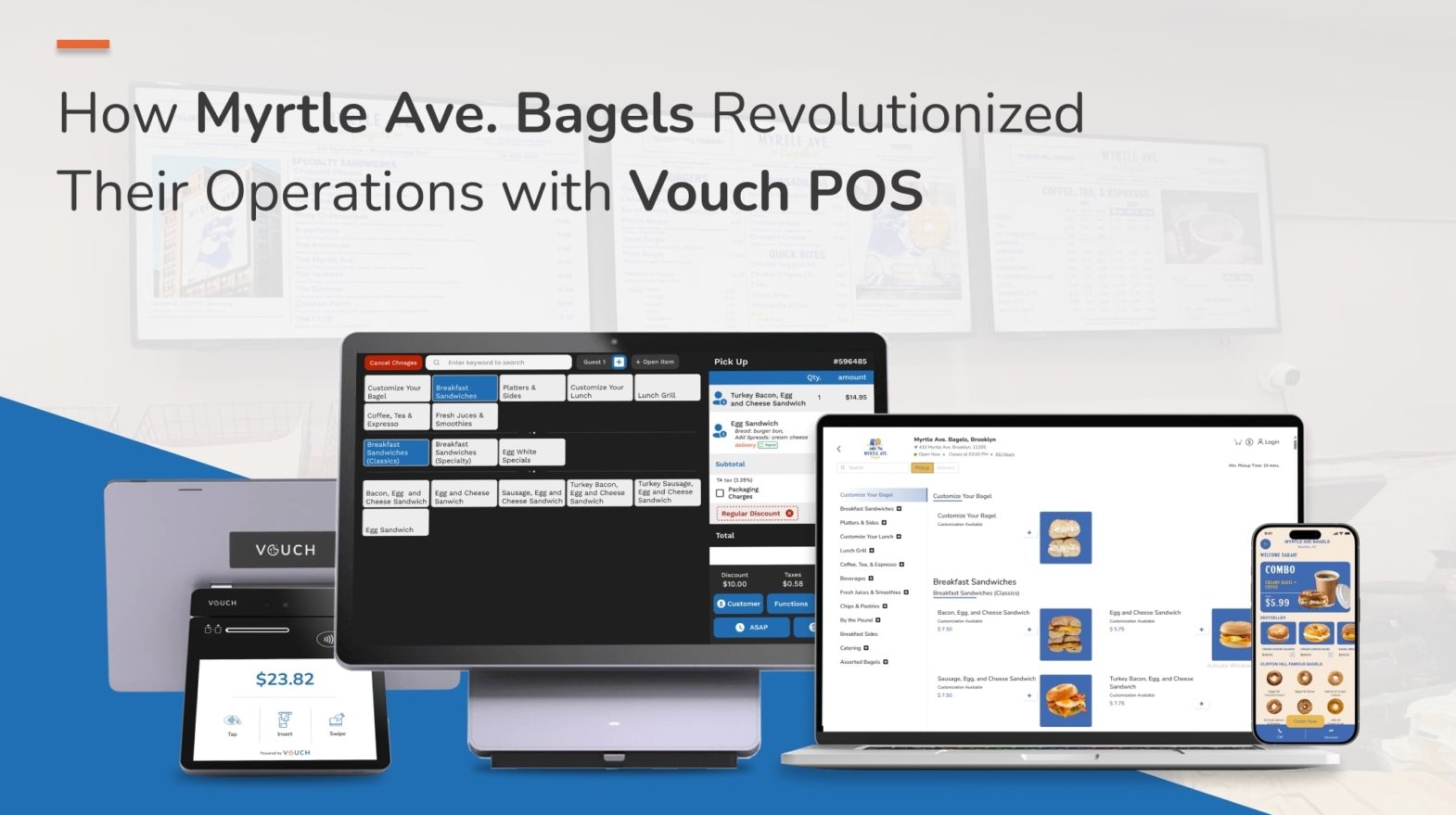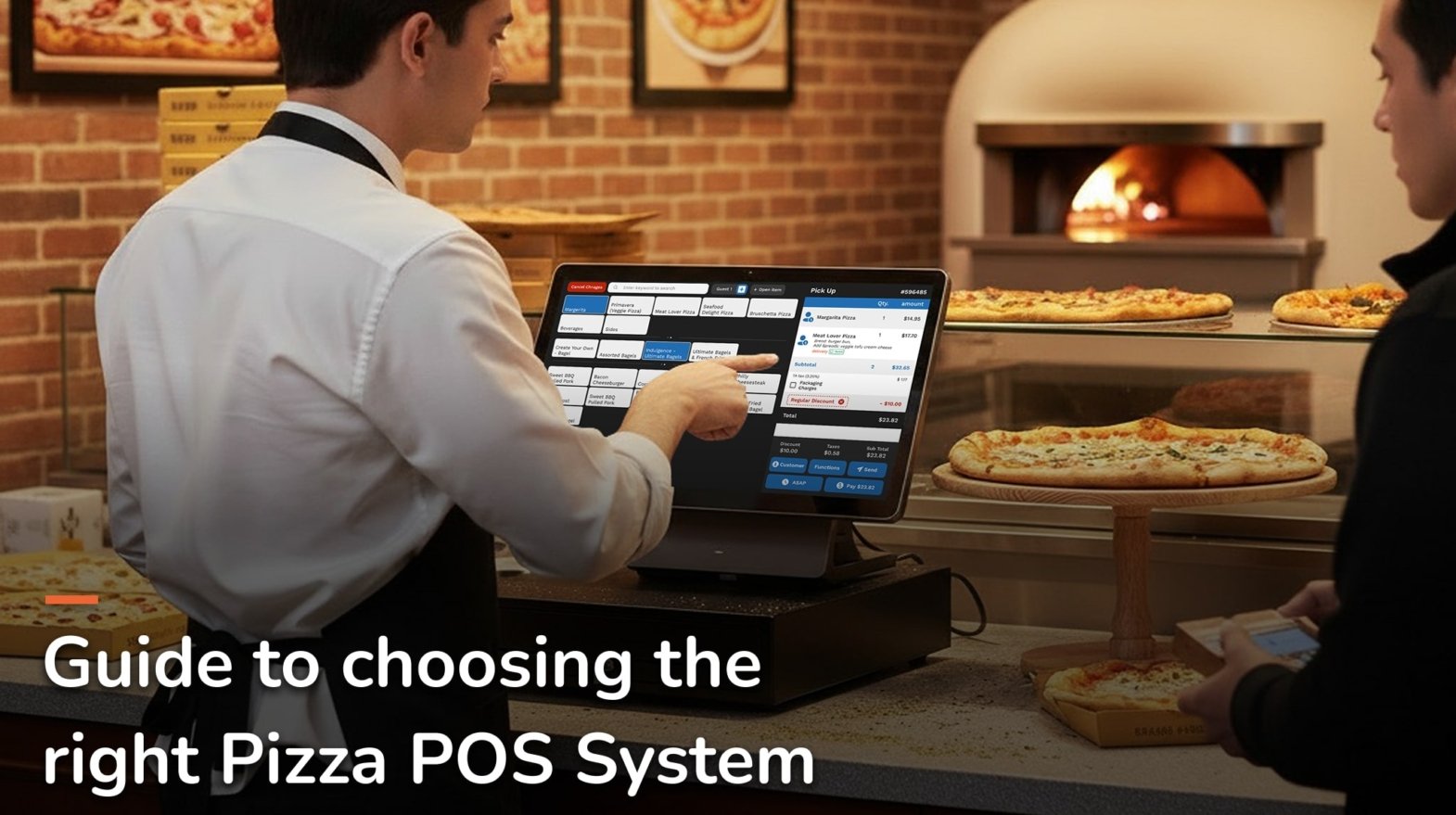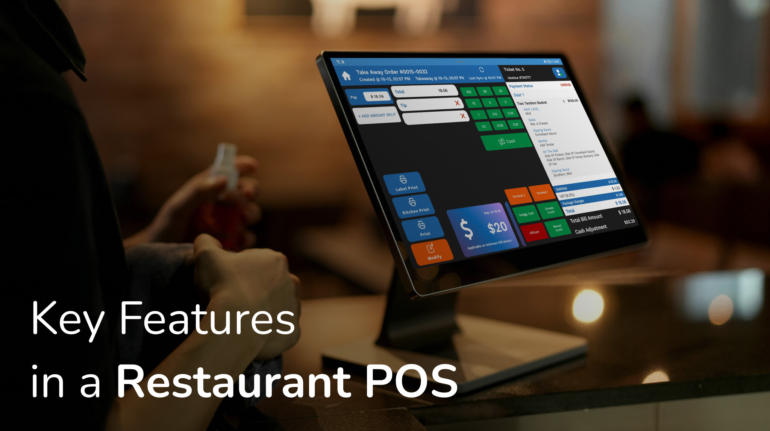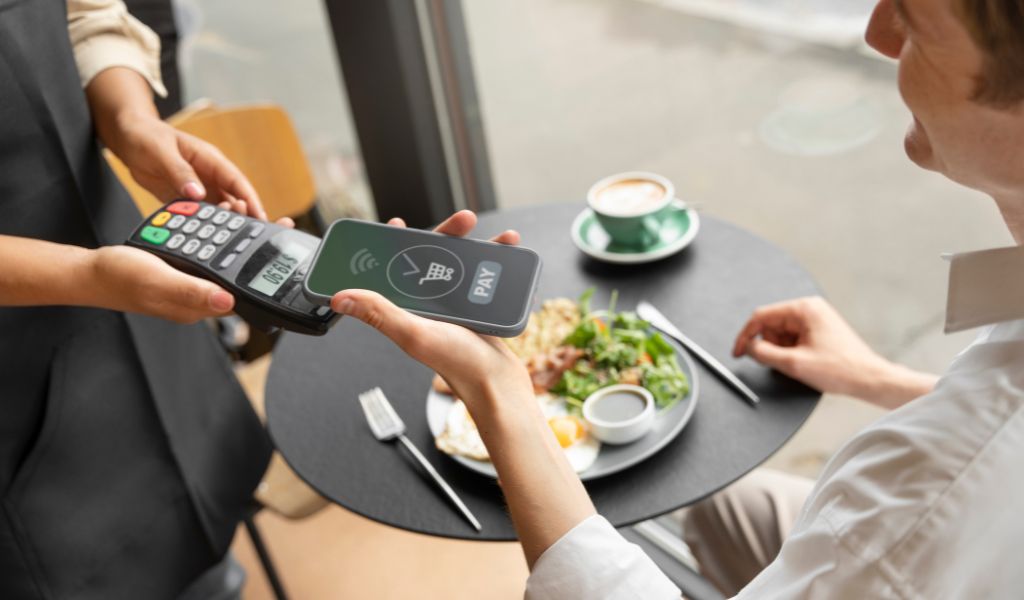
In This Post
- Creating a Welcoming Atmosphere
- Training Staff for Exceptional Service
- Personalizing the Dining Experience
- Leveraging Technology for Better Service
- Start taking your POS orders using tablets with Vouch POS
- Upselling Techniques and Their Impact on Tips
- Handling Customer Complaints and Issues
- Encouraging and Rewarding Staff Performance
- Conclusion
In the restaurant industry, tips play an indispensable role in the livelihoods of waitstaff. Unlike many other professions, restaurant employees often rely heavily on gratuities from customers to supplement their base wages.
This additional income can significantly impact their financial stability, making it a pivotal aspect of their job. For many servers, the tips they receive can constitute up to 60% of their total earnings, underscoring their importance.
Beyond the financial implications, tips also contribute to overall job satisfaction. When patrons leave generous tips, it serves as a validation of the server’s hard work and dedication to providing excellent service.
This positive reinforcement can boost morale, foster a sense of accomplishment, and encourage staff to maintain high standards of service. Conversely, inadequate tipping can lead to frustration and dissatisfaction, potentially affecting the quality of service provided.
The competitive nature of the foodservice industry further amplifies the importance of tips. Restaurants must consistently deliver exceptional service to distinguish themselves from competitors.
High levels of customer satisfaction not only encourage repeat visits but also increase the likelihood of receiving substantial tips. In an industry where customer experience is paramount, the ability of waitstaff to exceed expectations can be a critical differentiator.
Moreover, the dynamics of tipping create an environment where exceptional service is rewarded. This performance-based incentive system motivates waitstaff to hone their skills, improve their interactions with customers, and continuously strive for excellence. By understanding the vital role that tips play in both their financial well-being and professional fulfillment, restaurant staff can better appreciate the importance of their efforts in delivering outstanding service.
Creating a Welcoming Atmosphere

The ambiance and environment of a restaurant play a crucial role in shaping the overall dining experience, which can significantly influence customers’ tipping behavior. A welcoming atmosphere begins with the basics: lighting, music, cleanliness, and decor. Each of these elements contributes to creating a space where customers feel relaxed and valued.
Proper lighting is essential in setting the tone for the dining experience. Soft, warm lighting can create a cozy and intimate environment, encouraging customers to unwind and enjoy their meal.
Conversely, overly bright or harsh lighting can make the space feel sterile and uninviting. Adjustable lighting options allow for flexibility to match different times of the day or special occasions, enhancing the overall appeal of the restaurant.
Background music also has a significant impact on the restaurant atmosphere. Choosing the right genre and volume can complement the dining experience without overpowering conversations.
Soft jazz, classical music, or contemporary tunes played at a moderate volume can elevate the ambiance and make customers feel more at ease. It’s important to tailor the music selection to the restaurant’s theme and clientele to ensure it resonates well with the guests.
Cleanliness cannot be overstated when it comes to creating a positive impression. A spotless dining area, including tables, floors, and restrooms, reflects the establishment’s commitment to high standards and customer satisfaction. Regular maintenance and prompt cleaning not only ensure a hygienic environment but also contribute to the overall comfort and trust of the patrons.
Lastly, thoughtful decor adds character and charm to the restaurant, making it more inviting. Elements such as tasteful artwork, comfortable seating, and well-arranged furniture can enhance the visual appeal and overall atmosphere.
A well-designed space that aligns with the restaurant’s theme can leave a lasting impression on customers, making them more likely to appreciate their experience and reward it with generous tips.
In essence, a welcoming and comfortable atmosphere puts customers in a good mood, directly influencing their willingness to leave higher tips. By paying attention to lighting, music, cleanliness, and decor, restaurants can create an environment that not only attracts customers but also encourages them to express their satisfaction through gratuities.
Training Staff for Exceptional Service
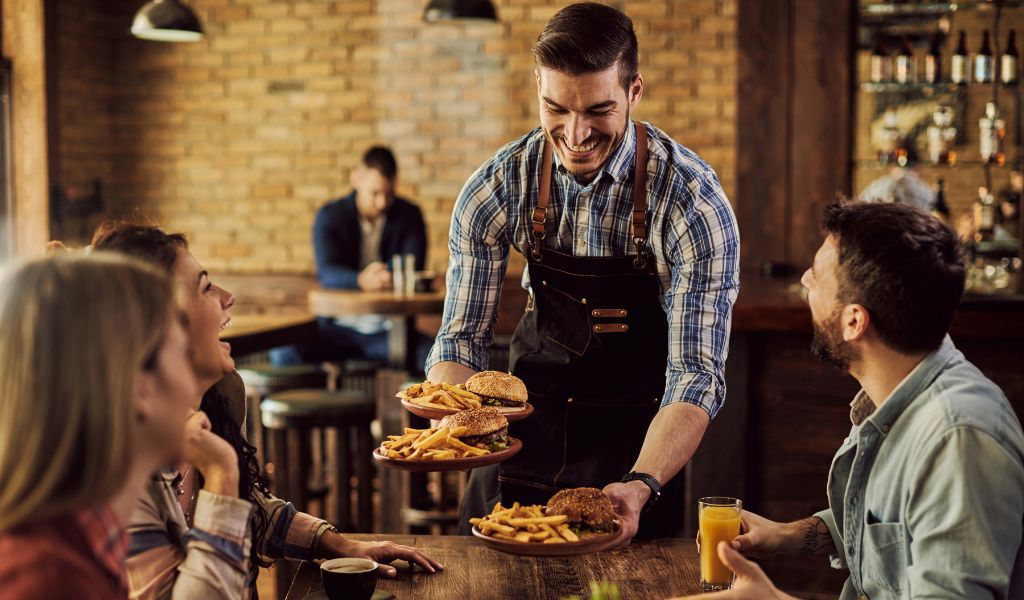
Thorough training is paramount for any restaurant aiming to enhance its customer service and, consequently, increase tips. Staff members who are well-trained in customer service skills can significantly elevate the dining experience, making customers feel valued and appreciated. This sense of care often translates into higher gratuities. A comprehensive training program should cover several key areas, including attentiveness, friendliness, and menu knowledge.
Attentiveness is crucial. Staff should be trained to anticipate customer needs, such as refilling water glasses or clearing empty plates without being intrusive. This can be achieved through regular role-playing exercises and feedback sessions. Additionally, encouraging staff to be vigilant and aware of their surroundings helps in providing timely service, thereby enhancing customer satisfaction.
Friendliness is another critical component. Encourage staff to greet customers warmly, maintain a cheerful demeanor, and engage in light conversation when appropriate. This can create a welcoming atmosphere that puts customers at ease. Training sessions can include techniques for managing stress and remaining courteous under pressure, ensuring that every customer interaction is positive.
Knowledge about the menu is equally important. Staff should be well-versed in all menu items, including ingredients, preparation methods, and potential allergens. This enables them to answer customer queries confidently and make personalized recommendations. Regular menu tastings and briefings can help staff stay updated and informed.
Body language and eye contact play a vital role in customer interactions. Training should emphasize the importance of maintaining good posture, making eye contact, and using open body language. These non-verbal cues can significantly impact how customers perceive the quality of service. Personalized interactions, such as addressing customers by name and remembering their preferences, can further enhance their dining experience and lead to higher tips.
In conclusion, investing in comprehensive staff training is essential for any restaurant looking to improve its customer service and increase tips. By focusing on attentiveness, friendliness, menu knowledge, and effective communication, staff can create a memorable dining experience that encourages customers to leave generous gratuities.
Personalizing the Dining Experience
Personalizing the dining experience is a critical strategy for enhancing customer satisfaction and, consequently, increasing tips in a restaurant setting. One of the most effective ways to personalize service is by remembering regular customers’ preferences and this can be done by restaurant pos system which allows you to add customer preference when you start taking new order. This effort can make patrons feel valued and appreciated, encouraging them to reward such service generously.
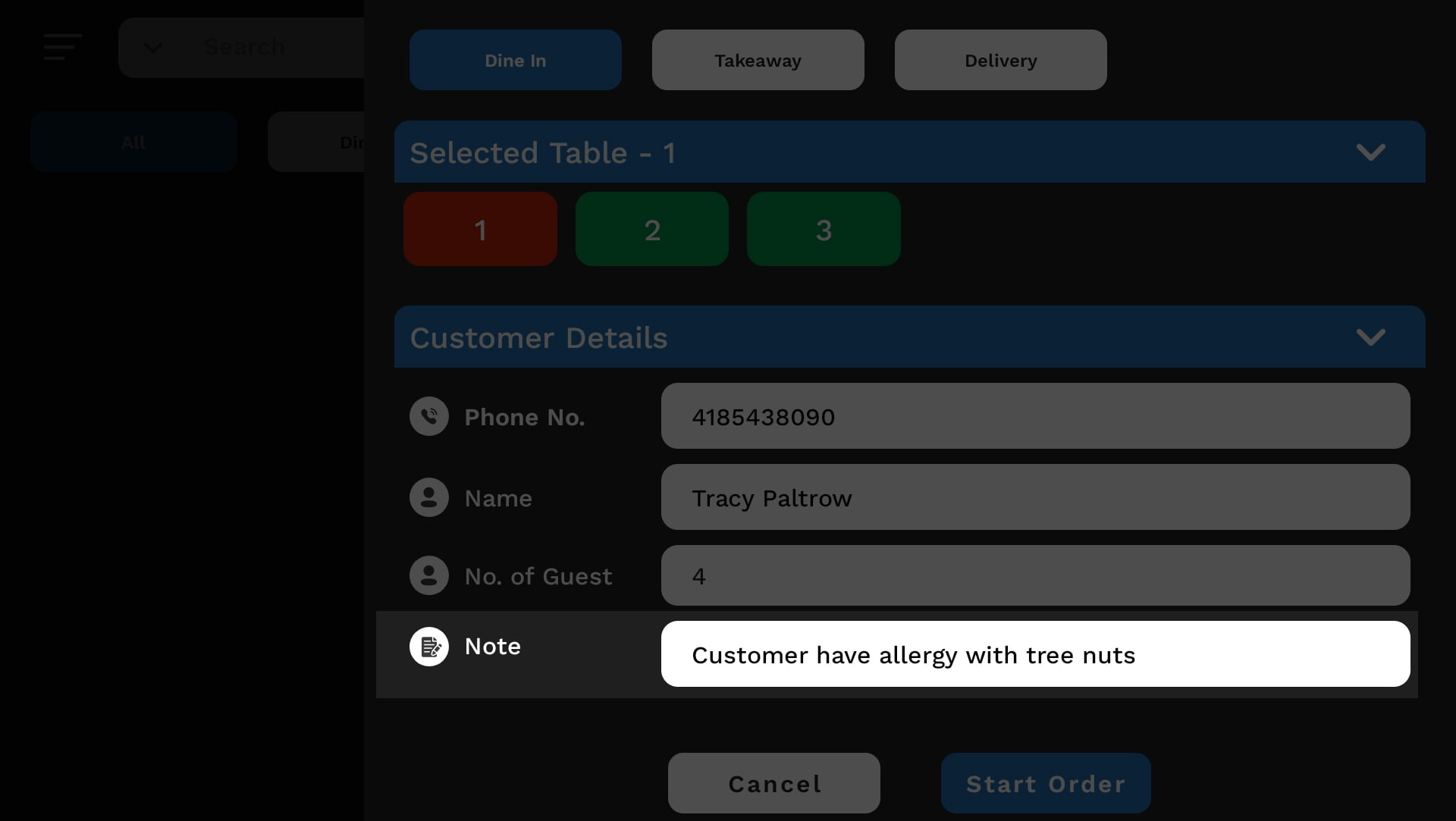
Save your customer preference & allergy in system
Another key approach is making tailored recommendations based on customer tastes. When servers take the time to ask guests about their flavor preferences or past dining experiences, they can suggest menu items that align with those tastes. This not only enhances the dining experience but also demonstrates a deep knowledge of the menu and a genuine interest in the customer’s enjoyment.
Creating special moments, such as acknowledging birthdays or anniversaries, can significantly enhance the dining experience. Simple gestures like offering a complimentary dessert or a personalized note can make these occasions memorable. These thoughtful touches show customers that the restaurant values their patronage and is willing to go the extra mile to make their visit special.
Personalized service fosters a connection between the staff and the customers, creating a more welcoming and enjoyable atmosphere. This connection often translates into higher customer satisfaction. When guests feel personally attended to, they are more likely to leave larger tips as a token of appreciation for the exceptional service they received.
Incorporating personalization into the service routine requires a combination of keen observation, effective communication, and genuine care. By focusing on these elements, restaurant staff can create a dining experience that not only meets but exceeds customer expectations, ultimately leading to increased tips and a loyal customer base.
Leveraging Technology for Better Service

In the fast-paced environment of modern restaurants, leveraging technology can significantly enhance customer service, leading to increase tips. One of the primary ways to achieve this is through the use of tablets for taking orders. Tablets streamline the ordering process by enabling servers to input orders directly into the system, minimizing the risk of errors and ensuring that orders are promptly sent to the kitchen. This efficiency not only speeds up service but also reduces wait times, creating a more pleasant dining experience for customers.
Mobile payment options represent another technological advancement that can boost customer satisfaction. By offering contactless payment methods, such as mobile wallets or QR code-based payments, restaurants can provide a faster, more secure transaction process. This convenience is particularly appreciated by customers who are accustomed to the seamless payment experiences offered by many retail environments. A smoother, quicker checkout process can leave a positive impression, encouraging customers to leave higher tips.
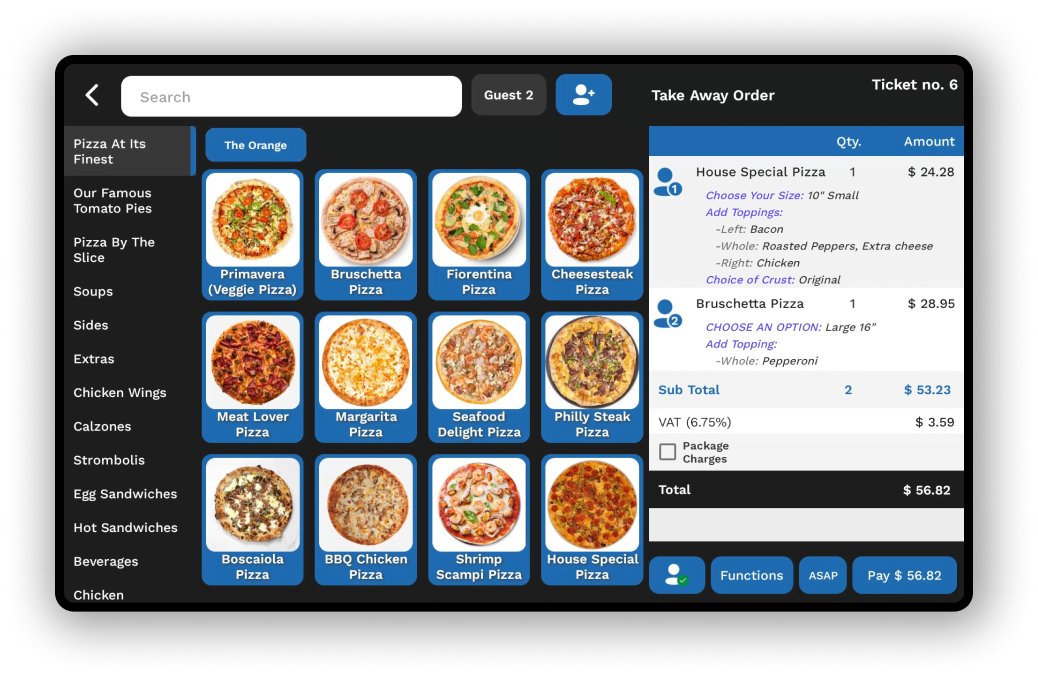
Start taking your POS orders using tablets with Vouch POS
Customer feedback apps also play a crucial role in enhancing service quality. These apps allow diners to provide real-time feedback on their experience, which management can use to address any issues promptly. By showing customers that their opinions are valued and acted upon, restaurants can foster a sense of appreciation and loyalty. Additionally, positive feedback can be shared with staff to boost morale and encourage exceptional service, which often translates to increased gratuity.
Incorporating these technologies not only enhances operational efficiency but also creates a more engaging and convenient dining experience. By reducing wait times, minimizing errors, and making transactions smoother, restaurants can significantly improve customer satisfaction. Satisfied customers are more likely to reward excellent service with generous tips, making the investment in technology a worthwhile endeavor for any establishment looking to boost its bottom line.
Upselling Techniques and Their Impact on Tips
Upselling is a strategic approach that can significantly enhance both the dining experience and the likelihood of receiving higher tips. By tactfully suggesting additional items such as appetizers, desserts, or premium drinks, waitstaff can potentially increase the overall bill, which often correlates with higher gratuities. This technique, when executed appropriately, not only benefits the restaurant’s revenue but also enriches the customer’s dining experience, making it more memorable and enjoyable.
One effective method of upselling is through personalized recommendations. Waitstaff should take note of customers’ preferences and dietary restrictions to suggest complementary items that align with their tastes. For example, if a customer orders a steak, a knowledgeable server might recommend a well-paired wine or a side dish that enhances the main course. This level of attentiveness shows customers that the staff is invested in their satisfaction, which can lead to a more generous tip.
Another critical aspect of successful upselling is the timing of the suggestions. Rather than overwhelming the customer with options at the start, servers can strategically introduce additional items at natural pauses in the dining experience. For instance, after taking the main course order, a server might recommend an appetizer to start the meal. Later, as the main course is being enjoyed, suggesting a dessert or after-dinner drink can feel like a natural progression rather than a sales pitch.
Importantly, the tone and delivery of upselling suggestions should remain friendly and non-intrusive. Phrasing recommendations as questions rather than statements can make the offer feel less pushy. For example, asking, “Would you like to try our special chocolate lava cake tonight?” is more inviting than simply stating, “You should get the chocolate lava cake.” This approach allows customers to feel in control of their choices while still being guided by expert advice.
Incorporating these upselling techniques not only enhances the dining experience but also fosters a positive relationship between the waitstaff and customers. This rapport can lead to increased customer satisfaction and, consequently, more substantial tips. By mastering the art of upselling, waitstaff can contribute to a more dynamic and rewarding dining environment for everyone involved.
Handling Customer Complaints and Issues
Effectively managing and resolving customer complaints is crucial in the restaurant industry. When a customer expresses dissatisfaction, the first step is to listen attentively. Allowing the customer to voice their concerns without interruption demonstrates respect and genuine interest in their experience. Active listening not only helps in understanding the issue at hand but also shows the customer that their feedback is valued.
Empathy plays a significant role in handling complaints. Acknowledge the customer’s feelings and validate their concerns. Phrases like “I understand how frustrating this must be” or “I’m sorry for the inconvenience” can convey empathy and help diffuse tension. It’s important to maintain a calm and composed demeanor throughout the interaction, as this will create a more positive atmosphere and facilitate constructive dialogue.
Prompt action is essential in resolving issues. Once the problem is identified, take immediate steps to rectify it. Whether it’s replacing a dish, offering a complimentary item, or providing a discount, swift resolution can significantly impact the customer’s perception of the service. Ensure that the solution is satisfactory to the customer and follow up to confirm their satisfaction.
Turning a potentially negative experience into a positive one can enhance customer loyalty and increase the likelihood of receiving a good tip. A well-handled complaint can leave a lasting impression, demonstrating the restaurant’s commitment to customer satisfaction. Moreover, positive resolutions often lead to word-of-mouth recommendations and repeat business, further contributing to the restaurant’s success.
In conclusion, mastering the art of handling customer complaints involves listening attentively, empathizing with the customer, and taking prompt, effective action. By transforming negative experiences into positive ones, restaurant staff can foster a loyal customer base and enhance their chances of receiving more tips.
Encouraging and Rewarding Staff Performance
Recognizing and rewarding staff performance is a fundamental aspect of fostering a motivated and efficient workforce in the restaurant industry. By implementing incentive programs, such as employee of the month awards, bonuses, or other forms of recognition, management can significantly enhance the overall service quality. This, in turn, often leads to increased customer satisfaction and more generous tips.
Incentive programs serve multiple purposes. Firstly, they acknowledge the hard work and dedication of staff members, making them feel valued and appreciated. This boosts morale and encourages employees to maintain high standards of service. For example, an employee of the month award is a simple yet effective way to recognize outstanding performance. This accolade not only boosts the recipient’s confidence but also sets a benchmark for other employees to strive towards, creating a healthy competitive spirit.
Bonuses and financial rewards are another impactful method of incentivizing staff. Offering bonuses for exceptional service or for consistently positive customer feedback can motivate employees to go above and beyond in their roles. Additionally, other non-monetary rewards, such as paid time off, gift cards, or special privileges, can also be highly effective. These rewards contribute to a positive working environment, where staff members feel their efforts are noticed and appreciated.
A motivated and appreciated staff is more likely to provide excellent service, which directly impacts customer experience. Happy and well-treated staff tend to be more attentive, friendly, and efficient, leading to a better dining experience for customers. As a result, satisfied customers are more likely to leave generous tips, recognizing the exceptional service they received. Therefore, investing in staff performance through various recognition and reward programs not only benefits the employees but also positively affects the restaurant’s bottom line.
Conclusion
Increasing tips in your restaurant is not just about providing excellent service—it’s about creating memorable dining experiences. By implementing the strategies discussed, you can significantly boost your tips while fostering customer loyalty.
Remember, happy and satisfied customers are more likely to reward your efforts generously.
Encourage your staff to take pride in their work, continuously strive for excellence, and stay attentive to guests’ needs.
By doing so, you’ll not only see an increase in tips but also cultivate a positive reputation that keeps customers coming back.
In the end, the secret to earning more tips lies in the consistent delivery of exceptional service and a genuine passion for hospitality.
Invest in your team, create a welcoming environment, and always aim to exceed customer expectations. Your efforts will undoubtedly pay off, not just in tips, but in the lasting success of your restaurant.
If you are looking for a complete restaurant management system that lets you handle tips with ease and also help you in streamlining your overall restaurant operations and increase profitability, check out our suite of solutions at Vouch POS.
We offer everything right from a complete POS solution, online ordering, kitchen display, self ordering and loyalty, we are your one-stop destination for market driven restaurant POS system.
Reach us out at info@vouchpos.com to schedule a quick demo or learn more about our solutions.

Smit Nebhwani is a tech entrepreneur with expertise in successfully building SAAS based products. Boasting over a decade of experience in the startup sector, he takes pleasure in sharing valuable insights on all facets of SAAS products. His extensive experience in the digital signage sector has established him as a reputable authority in the industry, and he channels this expertise through some valuable content. In his free time, Smit enjoys music, travelling and spending time with his family.
- 1. Run Your Business
- 2. Quick Service Restaurants
- 3. Full Service Restaurants
- 4. Marketing
Connect directly with a Vouch POS tech expert. No sales pressure, just a casual conversation to see if we're a fit for your restaurant.
